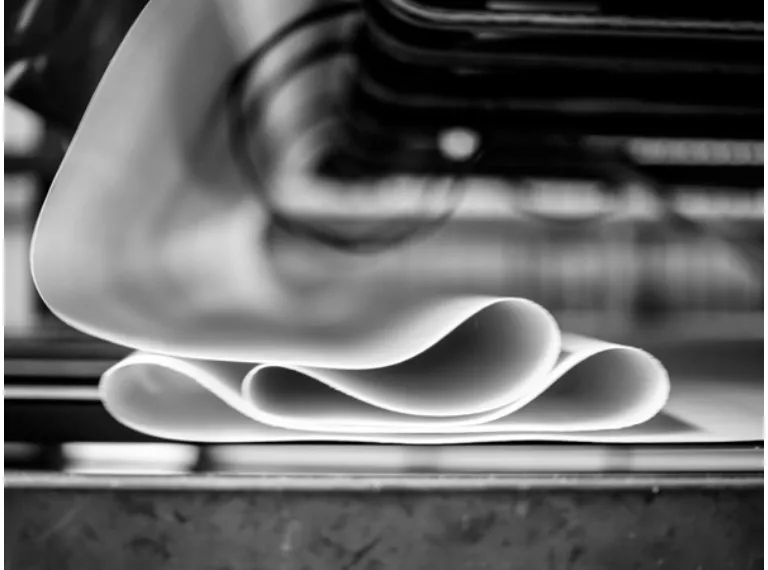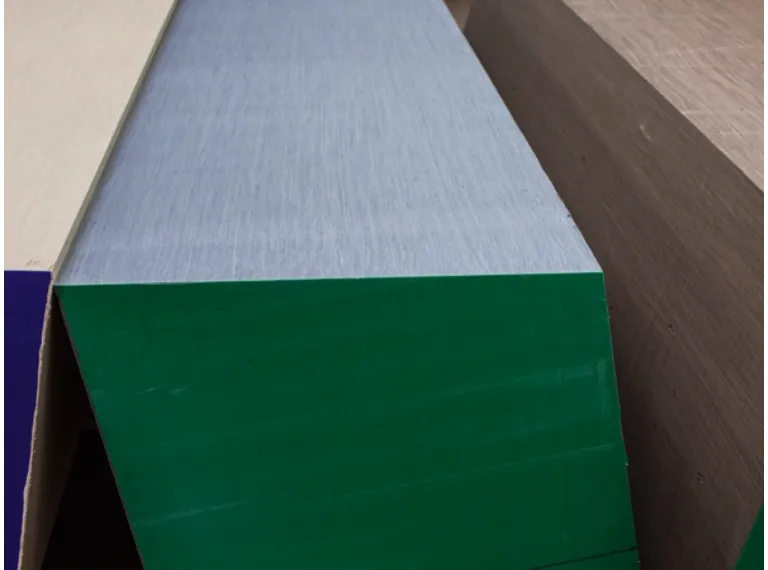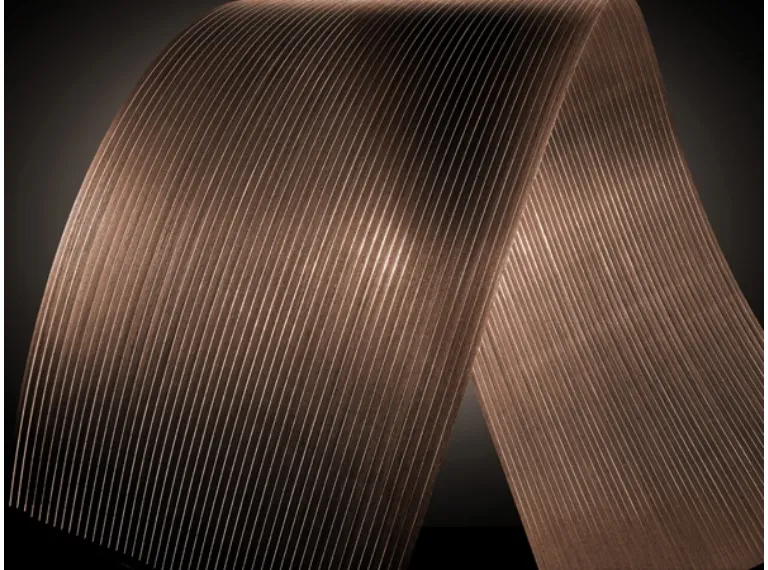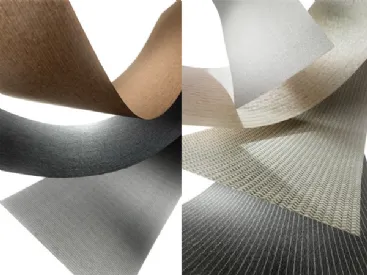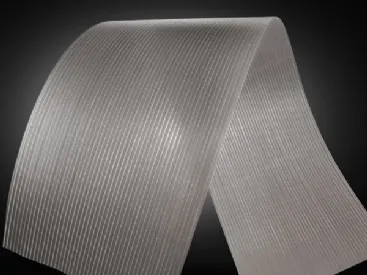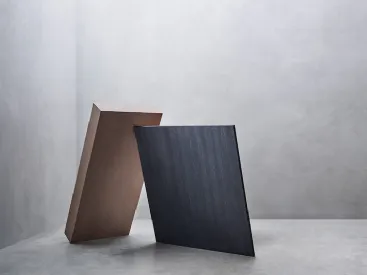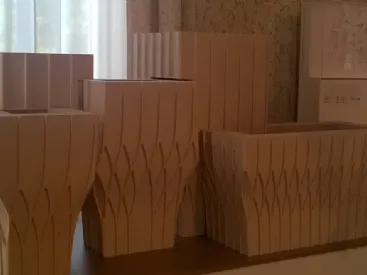Decorative surfaces in composite wood: the heart of the production
An enveloping and intense scent that mixes with the heat generated by the activity of the factory. This is our first sensation, as soon as we enter the Alpi di Modigliana plant: you can breathe an ancient scent, which best expresses the essence of wood and which is perfectly combined with extraordinary technology. This full immersion in a "dantan" essence, but in a hyper-technological background, always characterized by a high level of craftsmanship and "human factor", will not vanish for the entire duration of our visit, last 22 October, at the Italian industrial site in the Alps, of 180,000 square meters. (of which 52,000 are covered) But what does Alpi represent, a reality led with enthusiasm, passion for the profession and incredible foresight by the CEO Vittorio Alpi? Alpi is a leader in the production of composite wood surfaces and was the first company in the world to industrialize the manufacturing process. To decree its uniqueness, the perfect coexistence between technology and manual work: on the one hand, Alpi is pure innovation that anticipates market demands; on the other, meticulous tailoring. Thanks to the vastness of the range - applicable to finished products and horizontal and vertical surfaces, Alpi has always been a professional partner for large luxury companies, automotive and nautical giants as well as prestigious furniture, product design and architecture companies. of interiors and 360 ° contract, ranging from hôtellerie to multi-apartments, from retail to offices and public spaces. Our visit to the plant begins… from the logs, arranged in the square in front of the shed. Where do they come from? “All the wood we use comes from Italian plantation poplar, lime from American and European forests, Ayous from Africa which has a legal origin controlled and guaranteed by forest certifications. In Africa we have been granted nearly 500,000 hectares of tropical forest for which we are highly responsible. This is why we invest resources and energy to ensure that the forests are operational following settlement plans included in a sustainable forest project ”explains Vittorio Alpi.
Composite wood surfaces: the production phases
Vittorio Alpi describes in detail all the production phases: it is exciting to observe the machinery at work, as well as the dedication of the staff in checking that there are no defects, that the work is done to perfection. The dexterity and attention to the product being developed by the company staff is always very important to obtain a final result worthy of the great names in design. But what is the first step? “The logs selected by the Alpi technicians are debarked and transformed by a sheeter into thin sheets, cut into the sizes required by subsequent processing” explains Vittorio Alpi, who leads us to the top of the sheeter and proudly shows us this operation. However, at the center of the Alpi process there is the “dyeing” of the sheets to obtain the desired color tones, which is not a simple “painting”, as is repeatedly emphasized. Thanks to constant research on wood dyeing by Alpi laboratories, coloring systems based solely on water cycles are developed. “The dye used for our wood is identical to that used for the clothes,” says the CEO. The wood sheets are then impregnated by immersion in steel tanks at a controlled temperature with the addition of soluble dyes with an organic structure, therefore free of chromium and other heavy metals. , the dyed veneers are mixed, superimposed with the same orientation of the fibers and stacked for pressing. The stack of sheets thus composed passes to a roller gluing machine which spreads glue on each sheet. Gluing performs two important functions: in addition to making the pack of sheets monolithic, it also determines particular aesthetic figurations depending on the color of the glues used. "At this point the presses come into operation" says Alpi. , we obtain a compact block in the shape of a parallelepiped - the famous Alpi trunk - with dimensions of a few meters in length and about 70 cm in width and height, which passes to the shear to obtain the multilaminar (or precomposed) veneer having thickness from 0.3 to 3 mm ". Finally, each sheet is subjected to careful quality controls and, if necessary, repaired by expert hands according to the techniques of cabinet making. Finally, the laboratory of R&S is incredible, a real mini-factory in the factory, where there is constant work of experimentation, testing, research of the new and where it is possible to consult an archive of thousands of products made over the decades.
Recomposed wood vs traditional wood
A question arises spontaneously at this point: but what are the real advantages of composite wood surfaces compared to natural ones? “This type of processing minimizes scraps compared to the use of traditional wood. Here, nothing is really thrown away: all the scraps are reused, for example, for the construction of fruit crates "replies Vittorio Alpi and adds:" Our production process allows us to obtain a reproducible product, free from the typical defects of wood. traditional, and endowed with superior qualitative characteristics, thanks to careful controls and tailoring workmanship. ”We conclude our reportage with a brief history of Alpi, further proof of its excellence on international markets. A reality constantly looking to the future and a point of reference for the entire sector, Alpi was founded by Pietro Alpi in 1919 in Modigliana, in the province of Forlì. From a small workshop of high cabinet-making, it quickly transforms into a cutting-edge reality, also guaranteeing an important development for the local area. The turning point from furniture manufacturing to industry specialized in the production of prefabricated panels and composite wood intended for the then nascent furniture industry began as early as the 1950s, with the entry into the company of his son Valerio and the start of a widespread distribution on throughout the national territory. In 1961 Alpilignum was presented, the first veneer composed to date the most representative product of the company.A real revolution for the time made possible thanks to the deep technological effort and the important background in cabinet making that quickly led to success of Aalpi on international markets, from Europe to the USA up to the opening towards Asia in the early 1970s. An incessant growth which in turn feeds on the continuous activity of R&D. In fact, innovation has always been the real engine of Alpi. This drive for innovation has also led to the collaboration with Piero Lissoni who has held the role of art director since June 2015. Today Alpi - led by Vittorio Alpi, grandson of the founder - has a production capacity of over 30 million square meters per year, a widespread distribution in over 60 countries. It stands out for its reliability and solidity with a growing turnover that exceeded 130 million euros in 2014. There are two Italian factories: Legno dedicated to the production of “ALPIlignum” raw veneer and Linteco for “ALPIKord” pre-finished wood; in Africa the Group is present through ALPIcam Industries, which deals with the initial processing of logs; ALPIcam and Grumcam, the forestry companies of the Group, the extraordinary floating Alpi CI (Cộte d'Ivoire) plant and the commercial companies ALPI Timber and ALPIwood.
